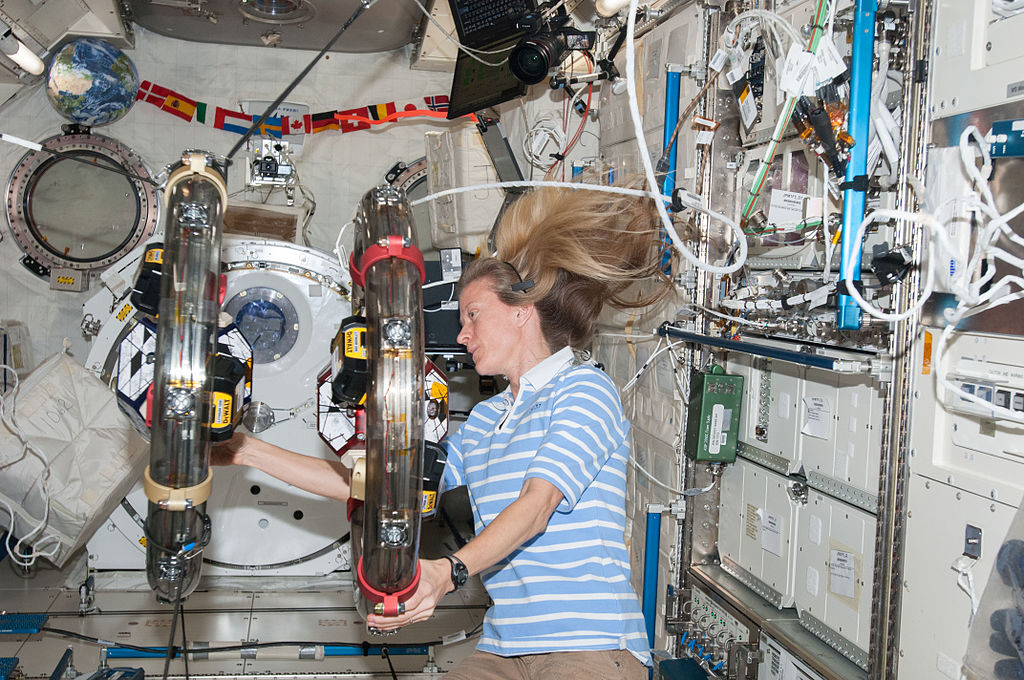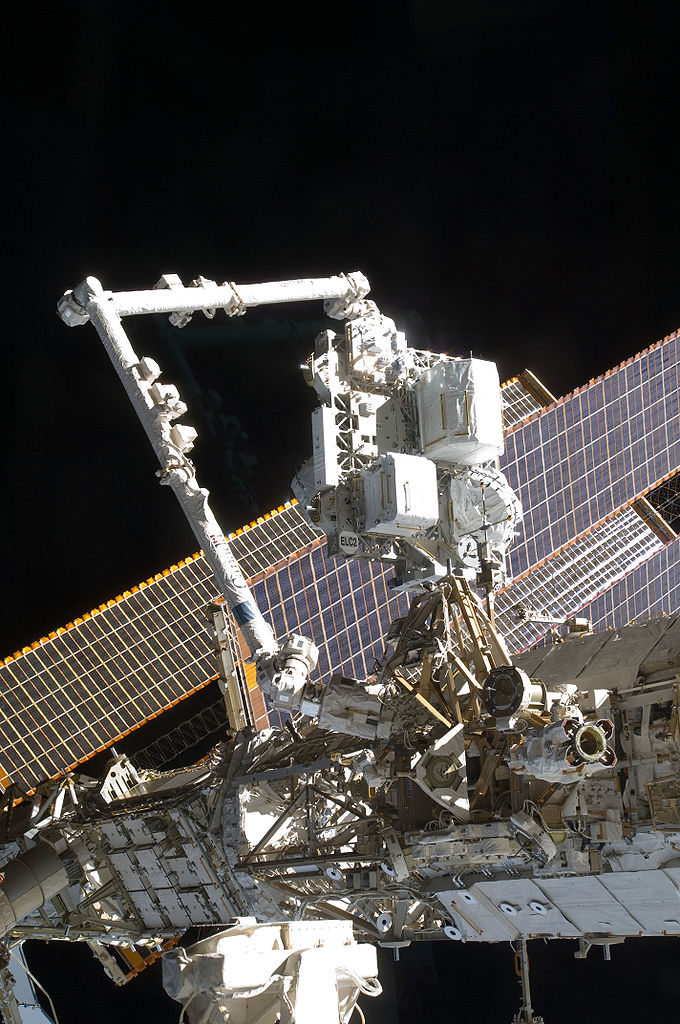International Space Station —
NASA has announced that it will let businesses pay to use the International Space Station (ISS). The move will allow companies to do the kind of space research that used to be limited to the government.
The ISS is a science laboratory in space. It’s made of many different pieces that have been added on slowly since 1998. The project is supported by groups in many different countries, including NASA in the US and Roscosmos in Russia. The group of astronauts working there changes often, but people have been living on the ISS for about 18 years.

(Source: NASA, via Wikimedia Commons.)
The station rotates around the Earth, over 200 miles (320 km) above it. The ISS allows scientists to do research in a place with very low gravity. It also lets them test things that might be used on other trips into space.
But the ISS costs NASA a lot of money – about $3 or $4 billion every year. And the ISS is just one of NASA’s many projects. NASA is now working on other big plans, too, including a project to land people on the moon by 2024.

(Source: NASA, via Wikimedia Commons.)
US President Donald Trump wants the government to pay less for the ISS and businesses to pay more. Last year, Mr. Trump’s government suggested that it wouldn’t support the ISS after 2025. The government later changed its mind, but NASA’s move is clearly an attempt to bring business money to the ISS.
Businesses can now use the ISS to run their own experiments. They can have NASA’s astronauts work on experiments for them. That’s a big change for the station and for NASA. In the past, NASA astronauts couldn’t work on experiments that could be used to make money. Now, they can even advertise things.
Businesses can also send their own private astronauts to the ISS.

(Source: NASA, via Wikimedia Commons.)
But NASA is keeping tight controls on everything. NASA’s astronauts can only work on experiments for businesses for 90 hours a year. Businesses can only send 385 pounds (175 kg) into space. And private astronauts can only spend 30 days on the ISS.
And using the ISS will cost a lot of money. For example, sending things into space will cost over $1,500 per pound ($3,000 per kilogram). Bringing things back down to Earth costs twice as much as that.

(Source: NASA, via Wikimedia Commons.)
Sending astronauts will be even more expensive. NASA says it will cost about $11,250 a day for private astronauts to use life-support systems and the toilet. If the private astronauts want “extra” supplies like food, air, or medical equipment, it will cost them an extra $22,500 per day.
NASA is hoping that businesses will jump at the chance to use the ISS for research. NASA is asking businesses to think of special “modules”, or new pieces, that could be added on to the ISS for long periods of time.

(Source: NASA, via Wikimedia Commons.)
But NASA’s new plan for the ISS also opens the door for very rich people to become “space tourists”. At least one company is planning to offer trips in the future. The price? Around $52 million.
